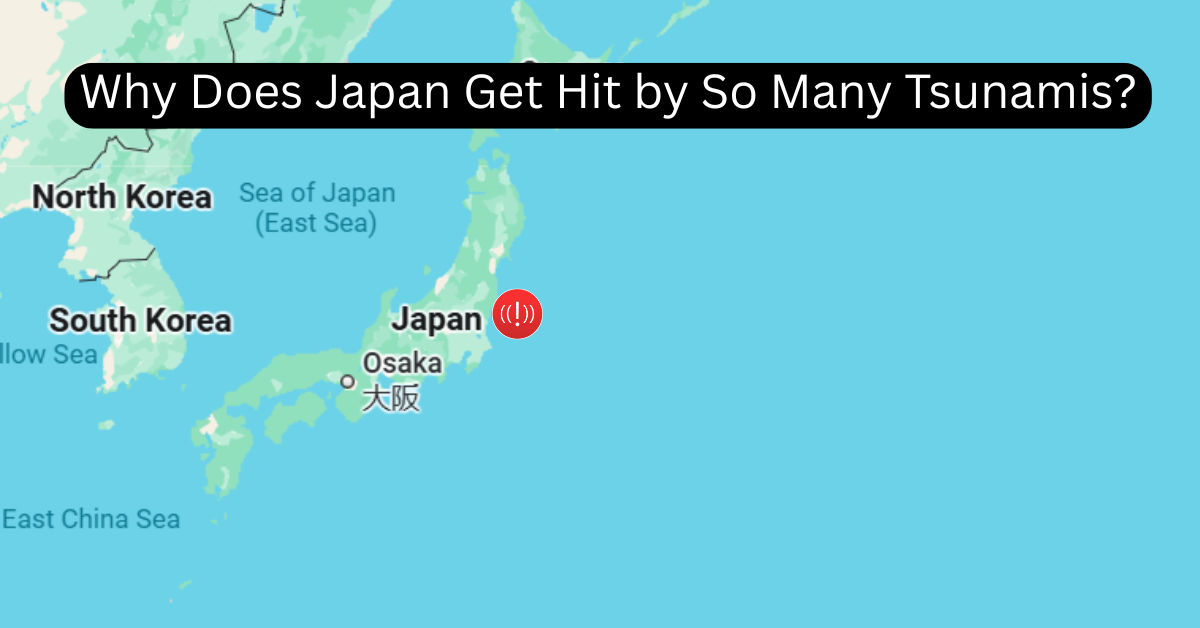When we think of tsunamis, one country that often comes to mind is Japan. From historic disasters to recent alerts, Japan has faced numerous tsunami events over the years. But why is this island nation so vulnerable to these giant waves?
Japan’s frequent tsunamis are mainly due to its geological location, active tectonic boundaries, and long coastlines. While it cannot avoid natural disasters, Japan’s strong focus on education, technology, and emergency planning helps save lives when tsunamis strike.
Let’s explore the reasons behind Japan’s repeated tsunami threats.
1. Location: Right on the “Ring of Fire”
Japan sits on the edge of the Pacific Ring of Fire, a horseshoe-shaped zone around the Pacific Ocean known for intense earthquake and volcanic activity. This area is where several tectonic plates—the massive slabs of Earth’s crust—constantly shift, collide, and grind against one another.
One of the most dangerous boundaries lies just off Japan’s eastern coast, where the Pacific Plate is sliding under the North American Plate. This kind of tectonic boundary is called a subduction zone, and it’s one of the most common sources of large undersea earthquakes—the main trigger for tsunamis.
2. Earthquakes That Shake the Sea
Tsunamis are most often caused by underwater earthquakes, and Japan experiences hundreds of quakes every year—many strong enough to move the seafloor. When the ocean floor suddenly shifts, it pushes the water above it, creating waves that can travel across oceans.
Some earthquakes generate only small waves, but others—like the 2011 Tōhoku earthquake—can create devastating tsunamis. That particular event produced waves over 40 meters (130 feet) high in some areas and caused massive loss of life and property.
3. Island Geography Increases Risk
apan is made up of thousands of islands, with thousands of kilometers of coastline facing the Pacific Ocean. This means that, even when earthquakes occur far away, tsunami waves can still reach Japan’s shores.
Its low-lying coastal towns, fishing villages, and cities make it especially vulnerable. Even small waves can flood land quickly, disrupt transportation, and damage homes.
Japan’s Response: Prepared but Always Alert
Because of its history, Japan has become a global leader in tsunami preparedness:
- Advanced warning systems can detect quakes and alert people within seconds.
- Sea walls and elevated evacuation zones are built in many towns.
- Schools regularly conduct tsunami drills for students and staff.
Read other Articles:
What Causes a Tsunami? Understanding Nature’s Giant Waves
Earthquake and Tsunami Strike: Russia, Japan.US Under Alert

